Project Area History
Preserving Stories, Honoring Legacy
The 375 corridor holds a rich history shaped by the communities that once thrived there. This project acknowledges the past, uplifts the voices of those affected, and ensures their stories and legacy remain central as Detroit moves forward.
Black Bottom and Paradise Valley were once the heart of Detroit’s Black community, home to thriving businesses, cultural institutions, and a legendary music scene. Despite systemic barriers like redlining, these neighborhoods fostered economic independence and resilience, making them vital to the city’s identity.
The construction of I-375 in the 1950s and ’60s displaced thousands of Black families and businesses, replacing a vibrant district with a highway that severed local connections. Now, the I-375 Reconnecting Communities Project aims to restore those connections, create new opportunities, and ensure Detroiters help shape the future of this corridor.
Archives
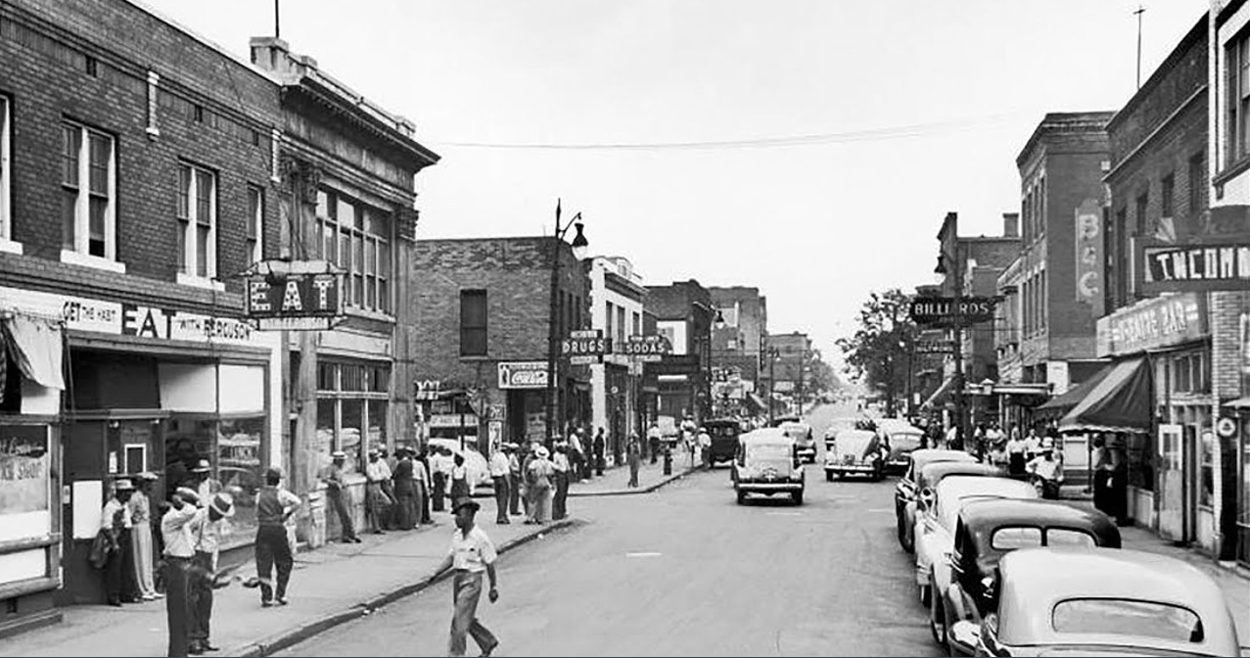
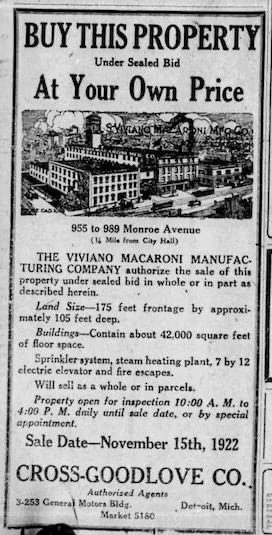
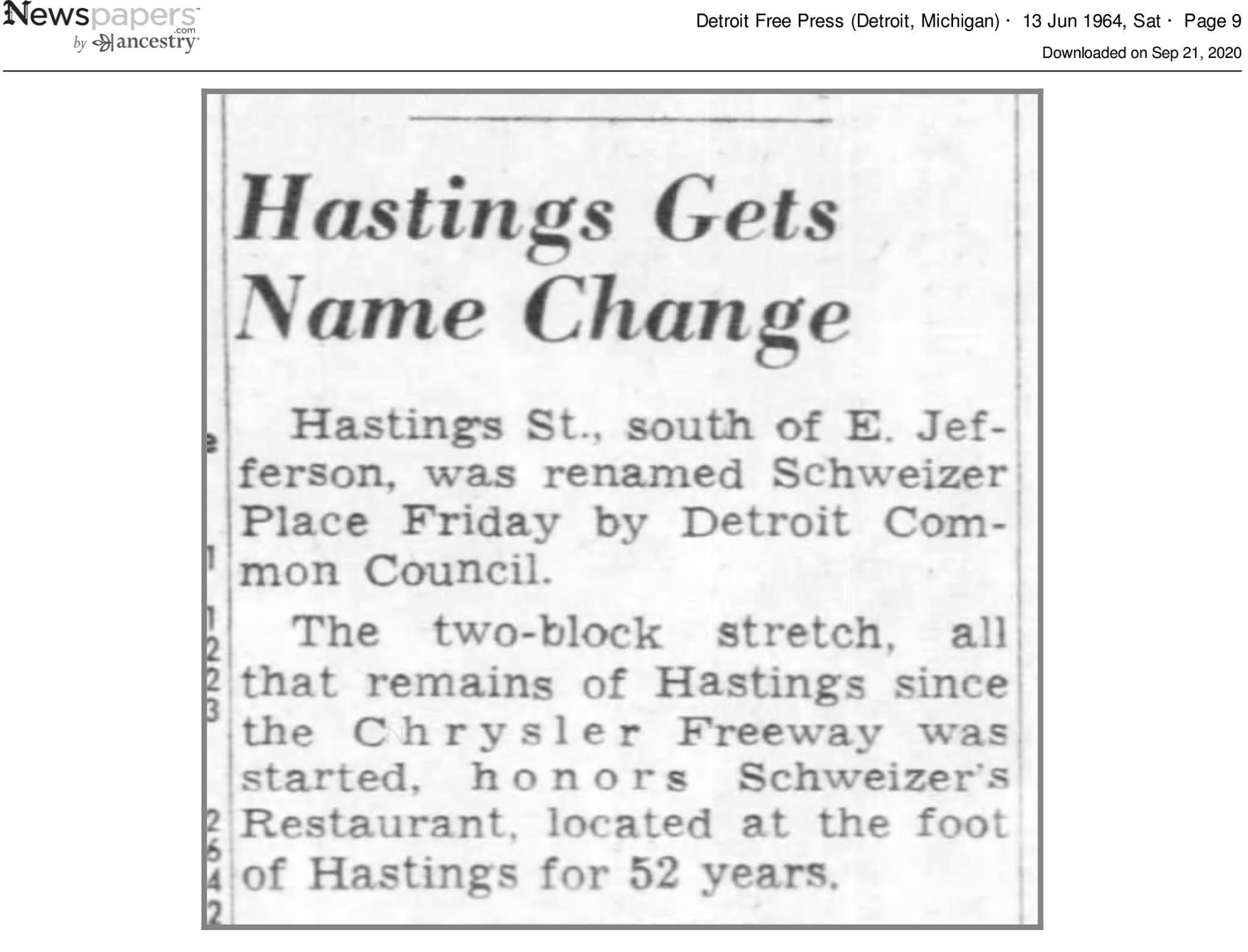
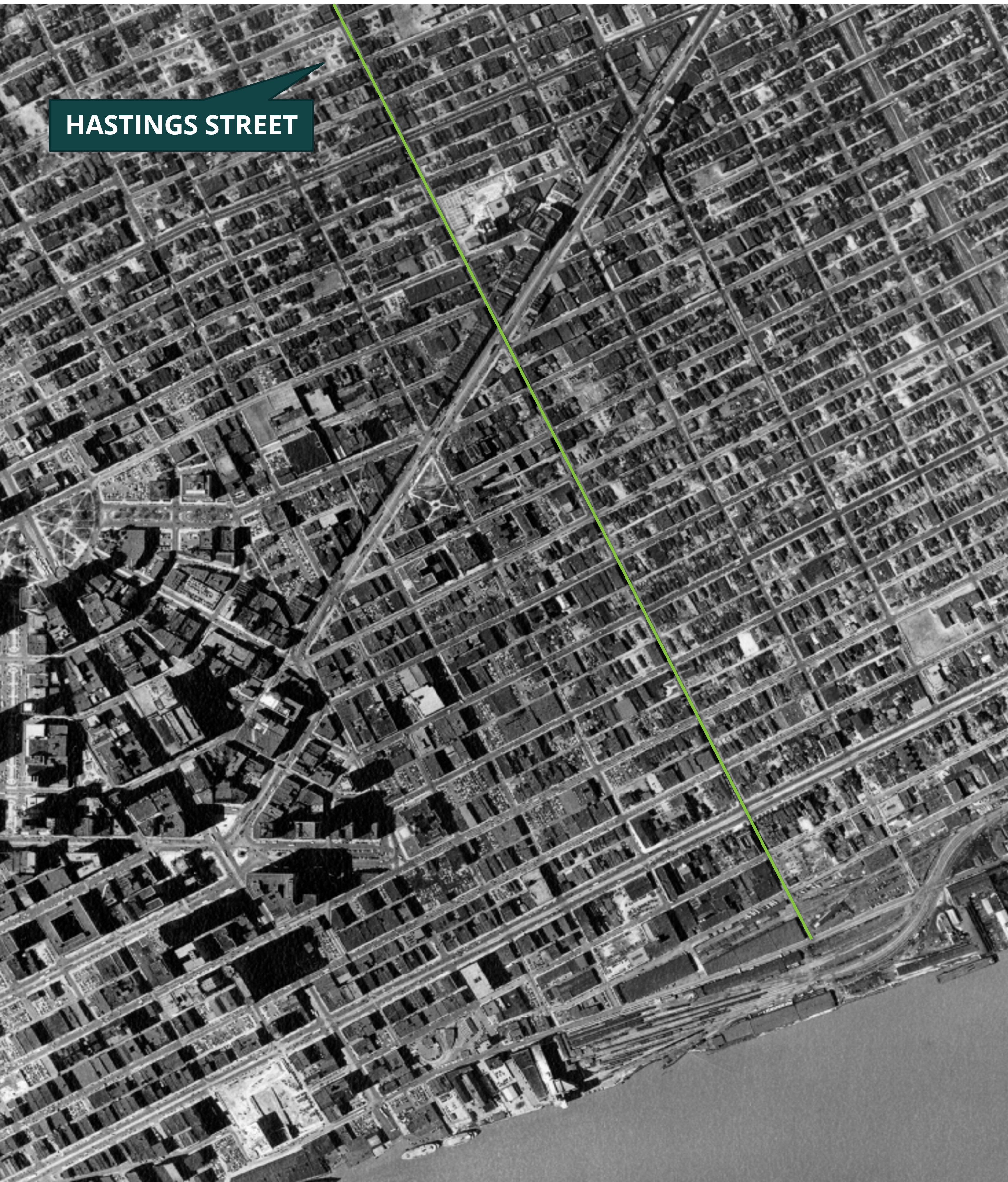
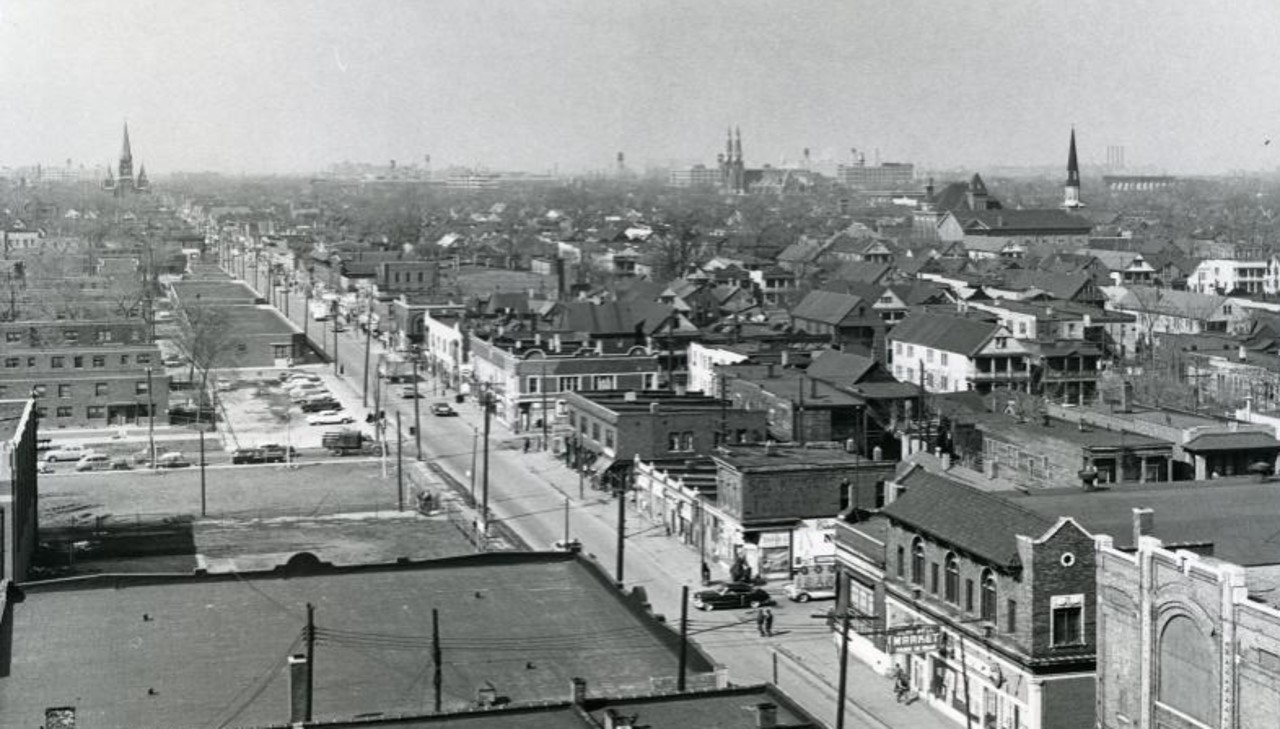
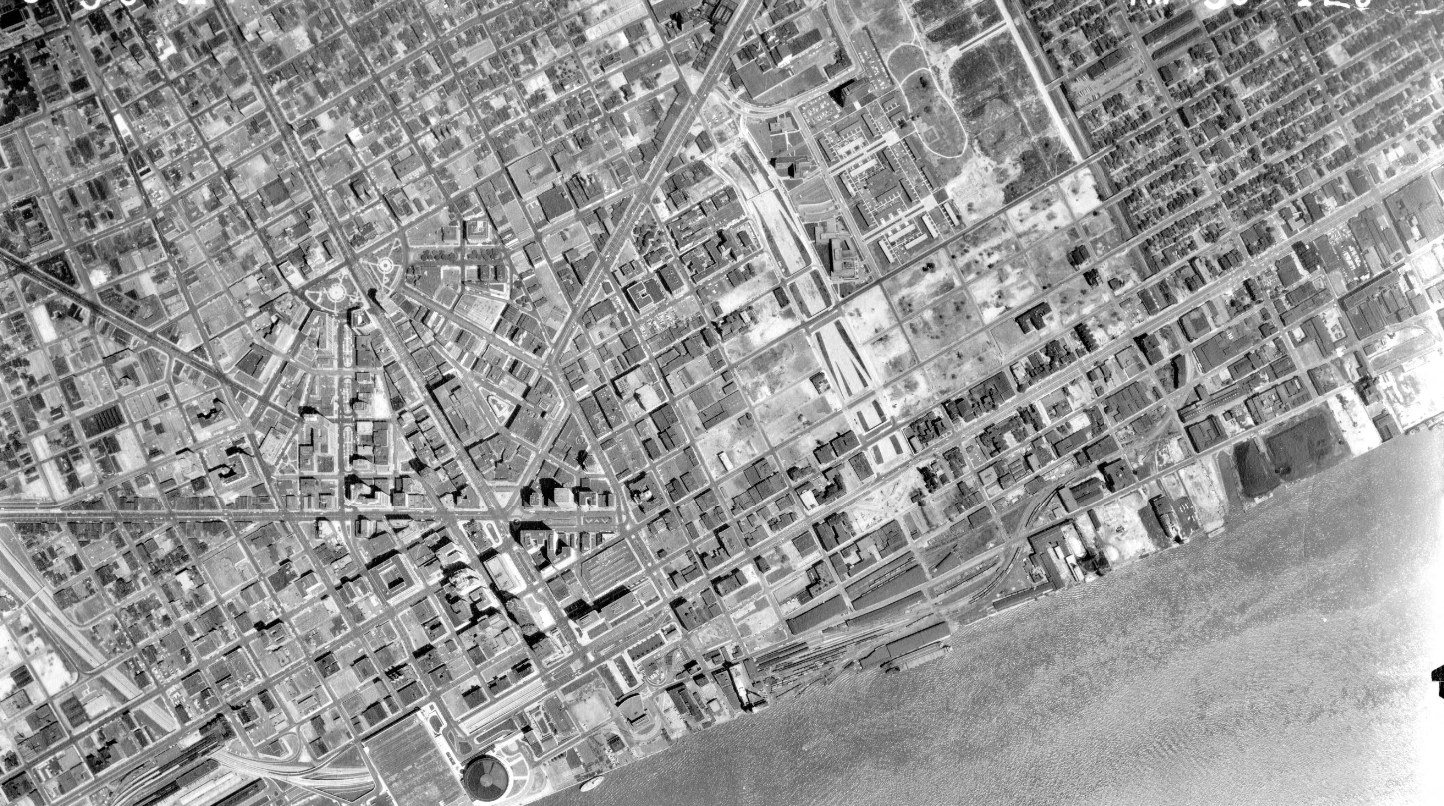
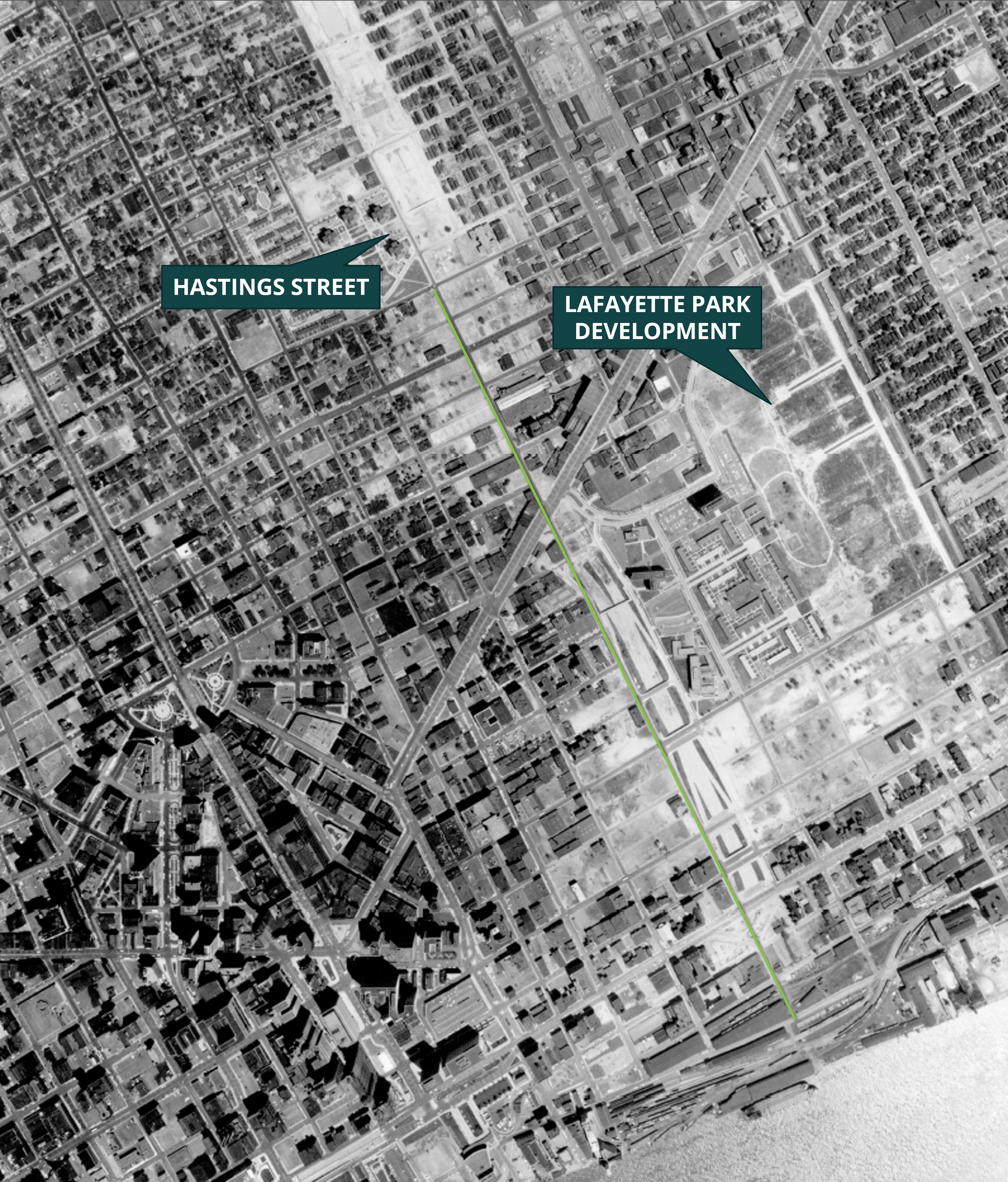

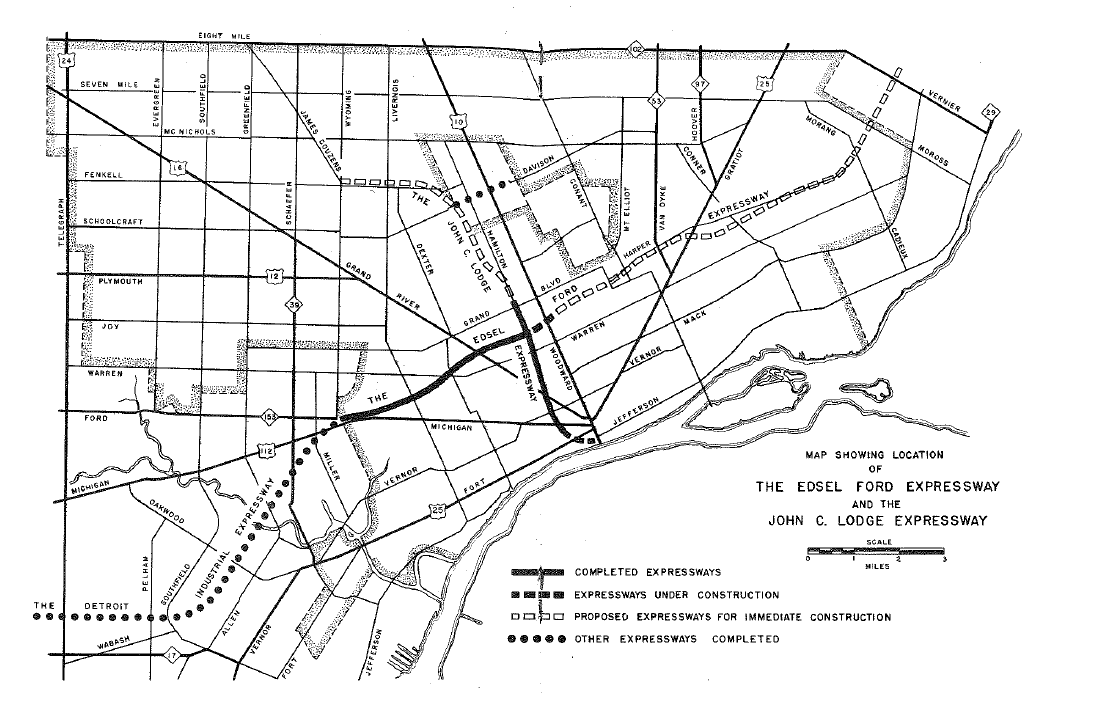
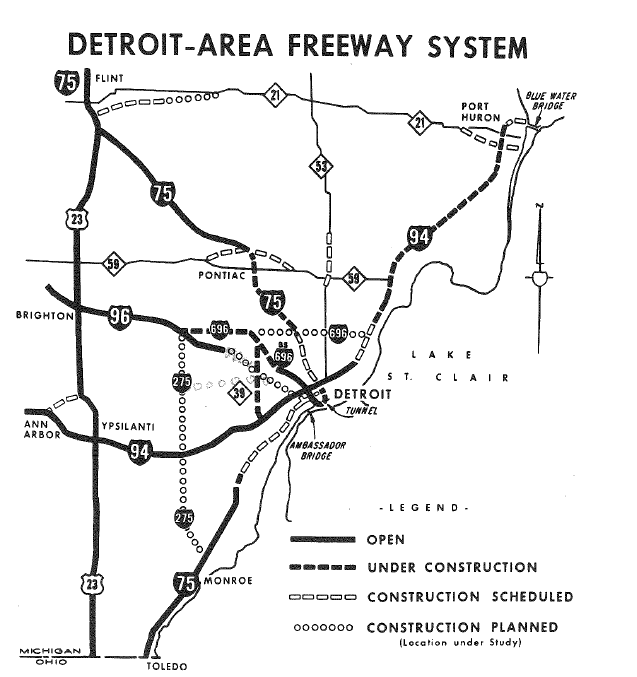
Detroit Expressways of 1954
In the early 1950s, Detroit underwent significant expressway development under Michigan State Highway Commissioner Charles M. Ziegler, notably with the construction of the Edsel Ford and John C. Lodge expressways. While these projects improved transportation efficiency, they came at a significant cost to historically Black neighborhoods such as Black Bottom and Paradise Valley, displacing families, businesses, and cultural landmarks that once thrived in these communities. The Edsel Ford Expressway, renamed in 1946, became part of the first full freeway-to-freeway interchange in the U.S. by 1953, while the Lodge Freeway, dedicated in 1957, required the demolition of numerous homes and businesses. These expressways reshaped Detroit’s landscape, contributing to economic expansion while leaving a lasting impact on the communities they displaced.
Detroit Expressways of 1964
In 1964, Detroit’s infrastructure development led to the completion of several expressway projects, notably the Chrysler Freeway (I-75) and its I-375 segment. These developments resulted in the displacement of predominantly Black communities, including the historic Black Bottom and Paradise Valley neighborhoods, which were vibrant cultural and economic centers. Beyond I-75 and I-375, the construction of the John C. Lodge Freeway also impacted residential areas, leading to the demolition of numerous homes and businesses. Similarly, the development of the Edsel Ford Expressway (I-94) led to the demolition of over 2,800 buildings in the West Side and northern Paradise Valley, including jazz nightclubs, churches, community buildings, businesses, and homes. These projects, while enhancing transportation infrastructure, had profound and lasting impacts on Detroit’s Black communities, contributing to significant demographic and cultural shifts in the city
If you have archival photos or stories related to Black Bottom or Paradise Valley, we’d love to hear from you!